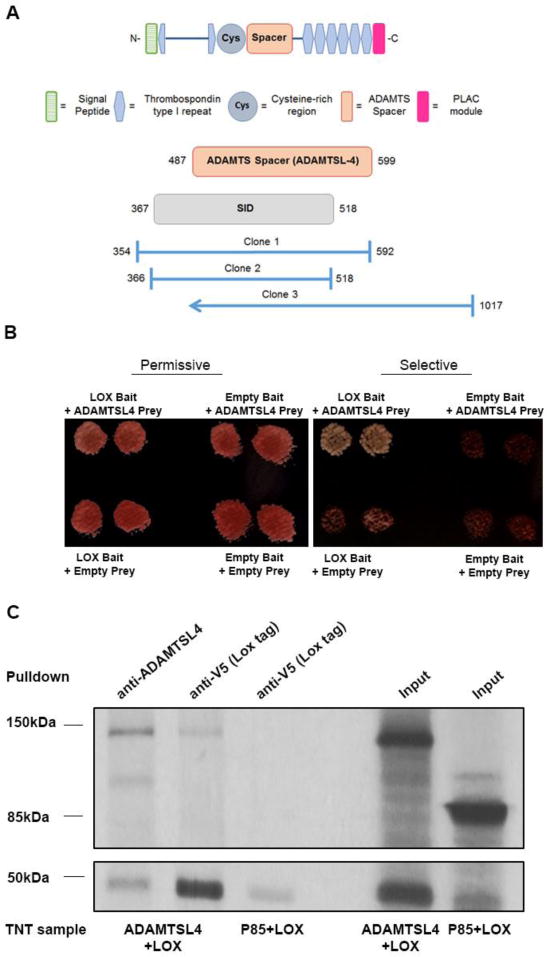Figure 1. LOX complexes with ADAMTSL4.

A. A yeast-two-hybrid (Y2H) screen using LOX as the bait identified three distinct ADAMTSL4 clones (clones 1-3). The selective interaction domain (SID) indicates the consensus interacting region of ADAMTSL4 determined by the overlap of the clones. B. Diploid yeast cells containing both a bait vector (LOX) and prey vector (ADAMTSL4 clone 1) were grown on nutrient permissive or selective plates along with negative controls of empty bait vector, empty prey vector and empty bait and prey vectors. The left-hand panel represents yeast colonies grown on (-)Leu (-)Trp permissive medium to maintain the growth of yeast containing both vectors, while the right-hand panel shows a replicate of the same plate on selective medium. Note that only colonies expressing both LOX and ADAMTSL4 grow on selective medium demonstrating that the two proteins interact. C. Autoradiograph of 35S-labeled proteins transcribed in the TNT system. Co-immunoprecipitation of lysates expressing Lox plus ADAMTSL4 or Lox plus P85. A band corresponding to Lox is observed slightly under 50 kDa (bottom panel), while that corresponding for ADAMTSL4 is slightly under 150 kDa (top panel). P85 has a molecular mass of 85 kDa. In the TNT reactions where both proteins were translated (as observed in the input lane, right) bands corresponding to both ADAMTSL4 and LOX are observed upon pull down of either one of the proteins. In contrast, P85, which was co-translated with LOX (right input lane), is not observed following LOX pulldown.
